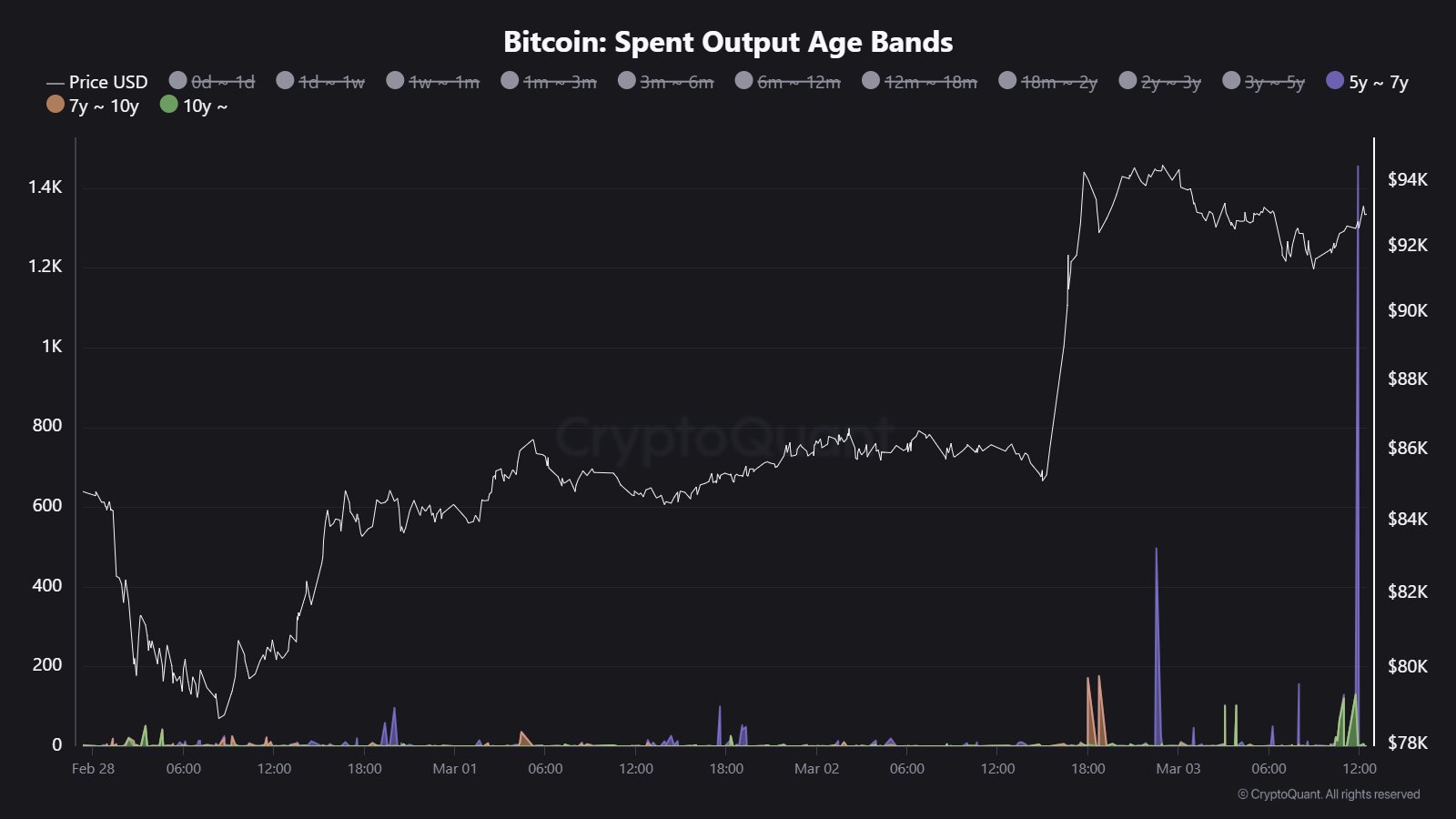Bitcoin Sleeping Giants Awaken: Whales Resurface Amid Surge
On-chain data shows the dormant Bitcoin whales have come back alive to make moves following the latest price surge in the cryptocurrency.
Old Bitcoin Whales Have Just Made Several Transactions
As explained by CryptoQuant community analyst Maartunn in a new post on X, there have been several transfers involving old tokens of the cryptocurrency during the past day.
The on-chain indicator of relevance here is the “Spent Output Age Bands,” which tracks the transaction activity of the various Bitcoin ‘age bands.’ An age band defines a time-range inside which the coins contained by it were last moved on the network.
The 6 months to 12 months band, for example, includes the tokens that were last involved in a transaction between six and twelve months ago. If the owners of these coins include them in a move, the Spent Output Age Bands would spike for the band.
Now, here is the chart shared by the analyst, that shows the latest trend in the indicator for the 7 years to 10 years and 10+ years age bands:
Looks like both of these groups have shown transactions during the past day | Source: @JA_Maartun on X
As is visible in the above graph, the Spent Output Age Bands has registered a few spikes from each of these age bands in the last 24 hours. This means that coins that were previously dormant for at least seven years have just been brought out of the freezer.
Given that the transactions followed the cryptocurrency’s recovery back above $90,000, it’s possible that these old whales made them to take profits. If so, it could be a bearish sign for the asset, considering how long these coins were dormant for.
Something to note, though, is the fact that when tokens get older than seven years, they become more likely to have reached their age by being lost, rather than by being HODLed. Coins are said to be ‘lost’ when the keys associated with the wallet holding them become misplaced.
Thus, it’s possible that the investors who have made these transactions in the past day only recently rediscovered the keys attached to the addresses. If they were truly HODLing by their own volition thus far, though, them deciding to sell now would suggest these diamond hands don’t believe Bitcoin would get much higher.
A cohort that’s more likely to contain willful HODLers is the 5 years to 7 years one and it turns out coins falling in this age band have also seen significant movement in the last 24 hours.
The trend in the Spent Output Age Bands for the 5 years to 7 years band | Source: @JA_Maartun on X
BTC Price
It would seem that the decision to sell from the dormant whales may not have been such a bad one as Bitcoin has already erased most of its gains from the rally, with its price falling back to $87,500.
The price of the coin has plunged in the past day | Source: BTCUSDT on TradingView
Featured image from Dall-E, CryptoQuant.com, chart from TradingView.com

